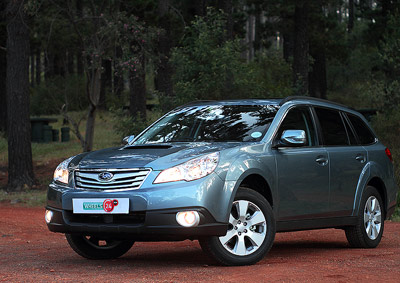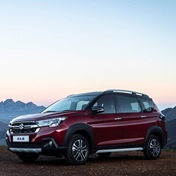
The company’s cars are, for lack of a better term, oddly styled (remember the radical glass-roofed SVX?) and for the most part over-engineered (Impreza 1.5 with all-wheel drive?), featuring a number of Subaru-specific design details.
There are, of course, advantages and weaknesses to Subaru’s unusual engineering heritage.
Although the company’s all-wheel drive design obsession has always ensured its cars boast had impeccable road manners on a variety of surfaces, an extra differential and halfshafts added weight – which adversely affected fuel consumption.
Those horizontally-opposed fours and sixes may sound fantastic, yet they are hardly the most efficient engines around.
The combination of all-wheel drive and a line-up of boxer engines with immodest drinking habits have always made the larger Subarus (Outback, Legacy, Forester and Tribeca) rather expensive ownership prospects – despite their sterling reliability.
The solution to Subaru’s fuel consumption problem has always been compression ignition and finally, in October 2011, the company introduced its first turbodiesel to South Africa – the Outback 2.0D.
BOXING CLEVER
This new 2.0D expands Subaru’s Outback range to three engine derivatives with the diesel the only turbocharged boxer, alongside its 2.5 and 3.6 petrol siblings.
If you're an engine-design anorak then, yes, this is the world’s only production horizontally-opposed diesel engine.
An achingly long-time in the making, the 2.0D is the company’s first diesel in 45 years of boxer engine design.
Subaru’s excuse for its glacial turbodiesel development timetable was engineering integrity - it had to right first time, without any compromises. There was a desire to ensure its debut compression ignition engine would in no way detract from what makes the company’s boxer configuration's so appealling: negligible harshness and vibration.
The company's powertrain engineers have been true to their word. The two-litre boxer turbodiesel, despite average output figures of 110kW and 350Nm, is stunningly refined in operation. Although (understandably) lacking the raspy boxer tone of Subaru's petrol engines, uninformed bystanders would be at their wits' end to identify this new Outback as a diesel idling next to one of its petrol siblings purely by its acoustic signature.
From behind the helm, only the tachometer's more conservative red-hued warning bars (coloured in just below 5000rpm) and a typical elastic-band turbodiesel torque delivery effect betray the 2.0D’s oil-burning origins.

FUEL SAVER: Featuring a perfectly square bore and stroke ratio of 86mm and characteristic smoothness inherent to its boxer engines, Subaru’s first flat-four diesel is pleasingly refined and uncannily fuel efficient – for an Outback...
Despite equally calibrated first and final-drive ratios, the 2.0D is geared around 20% shorter than the 2.5 from second thruogh to sixth gear. Unsurprisingly, considering the shorter gearing and 350Nm torque peak (which table-tops at 2400rpm, the Outback 2.0D feels an awful lot swifter than its 2.5 petrol sibling - both in traffic and hauling on the highway.
Subaru claims the 1.5-ton Outback 2.0D should average 6.3 litres/100km. With reduced consumption being its raison d'être, I managed to return a real-world economy figure of 7.2/100 with the 2.0D. This is plainly a huge improvement over the petrol Outbacks, which rarely register fuel consumption below the teens.
THE SENSIBLE SUV?
Beyond the turbodiesel engine’s frugality and improved in-gear flexibility, all the Outback’s conventional points of appeal remain. it's fundamental correctness of design impressed met yet again with the 2.0D on test, nearly a year after driving the petrol version during its local launch.
Independently suspended at all four wheels, the Outback offers premium D-segment ride-quality (insulating its occupants from most surface harshness over sub-standard roads) and the rear differential ensures Subaru’s time-honoured all-wheel drive is always engaged - guaranteeing outstanding traction and stability when negotiating forbidding dirt-roads at speed.
The steering is lazy in typical Subaru fashion, yet the boxer engine's low centre of gravity allows the Outback 2.0D to be piloted with some urgency over challenging roads when required, with the AWD creating an understeer-biased safety net at the limit.
An upgrade easily glossed on the 2.0D is its brake discs, shared with the headline 3.6R. Measuring 316mm diameter up front and 290mm at the rear, the 2.0D’s ventilated discs are 20 and 6mm larger than the 2.5 Outback’s. These larger brakes, with their superior heat dissipation, are fitted to the 2.0D Outback due to its tow rating, which at 1.7 tons is only 100kg shy of the 3.6R's rig-rating and 200kg better than the Outback 2.5. Further validating the Outback 2.0D’s ability as a towing vehicle is its self-levelling rear suspension.
Fundamentally conceived to appeal to outdoor enthusiasts, Subaru’s Outback has always been the thinking man’s SUV. The styling (especially viewed rear three-quarter) is hardly what one would class as elegant yet, with 213mm of ground clearance and a proper centre differential (not to mention appropriately dimensioned 225/17 Yokohama Geolanders), the Outback has as much off-road ability as the average family-orientated owner would require for weekend getaways.
Courtesy of its sheer dimensions (4.79m bumper-to-bumper), the Outback has an ample 1690 litrs of stowage capacity with the second-row seating tumbled forward. In terms of object reference, my mountain bike travelled inside without having to detach any of its wheels…

FAMILY FRIENDLY?: The centre-floor transmission tunnel hump (a consequence of the all-wheel drive system) makes second-row seating a touch cramped for the middle passenger.
The grey, flat-faced fascia is hardly appealing but does have handy flip-door cubbies for valuables.
Although I initially despised Subaru’s placement of the electronic parking brake (located to the right of the steering wheel, under the ventilation duct), it does free up centre-console space for miscellaneous items.
After the Legacy and Outback’s debut in 2009, there was much post-launch hysteria about the parking brake’s ergonomically objectionable design. In hindsight, it was pure brand snobbery, as Mercedes-Benz’s S-Class features its parking brake in the exact same place.
VERDICT
It may not be pretty but, with proper all-wheel drive, stellar drivetrains, fair equipment levels and unbreakable build quality Subaru’s Outback has always been, as I have mentioned, the thinking man’s SUV.
The addition of a diesel engine has addressed the single bane of owning an Outback, which has always been the petrol models' rather rampant fuel consumption.
Unquestionably there are better-looking SUV's availible, with more powerful diesel engines, yet for those who have always hankered after the Outback’s unique appeal this new 2.0D is all the car they'll ever want.




 Publications
Publications
 Partners
Partners














